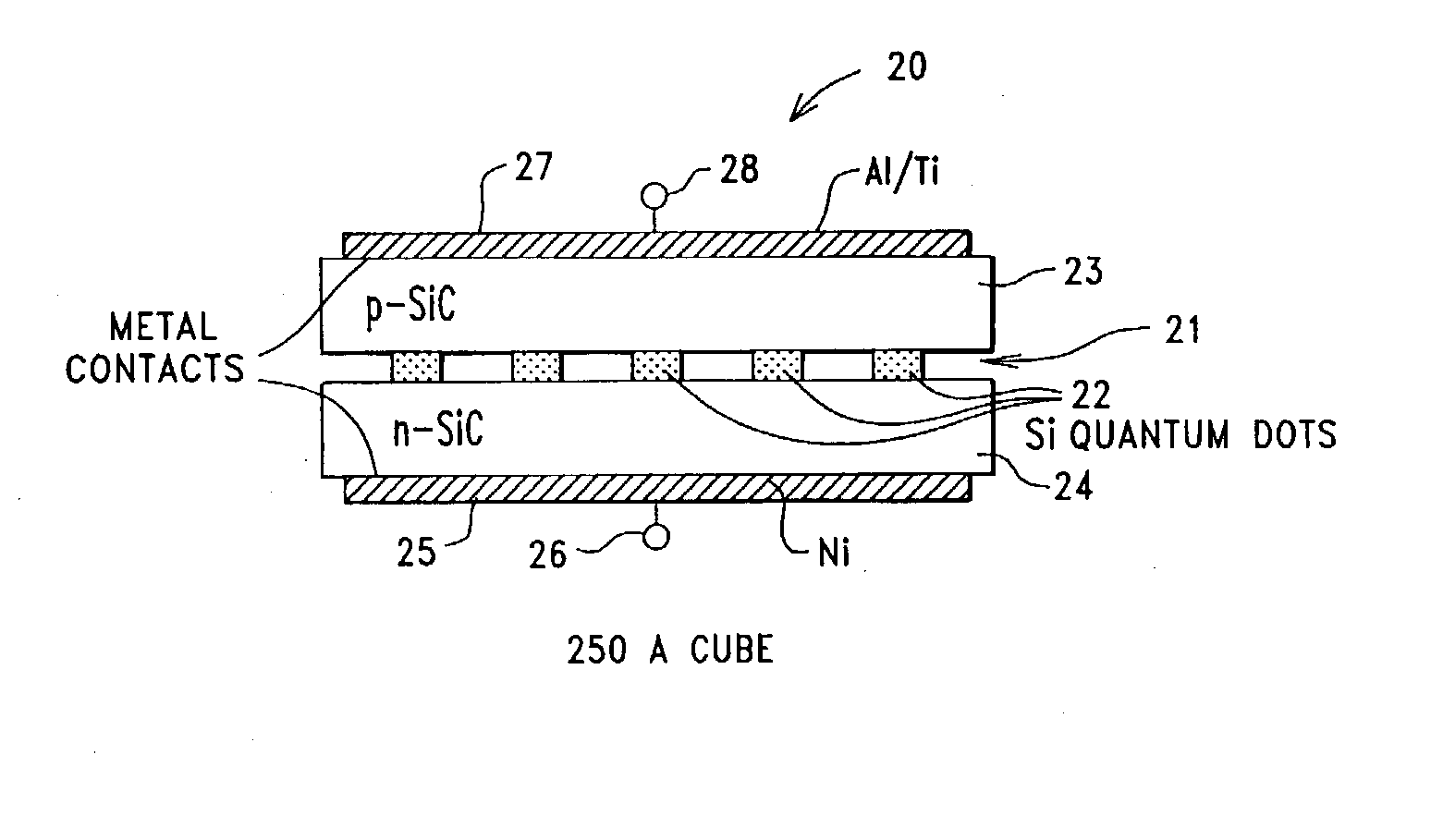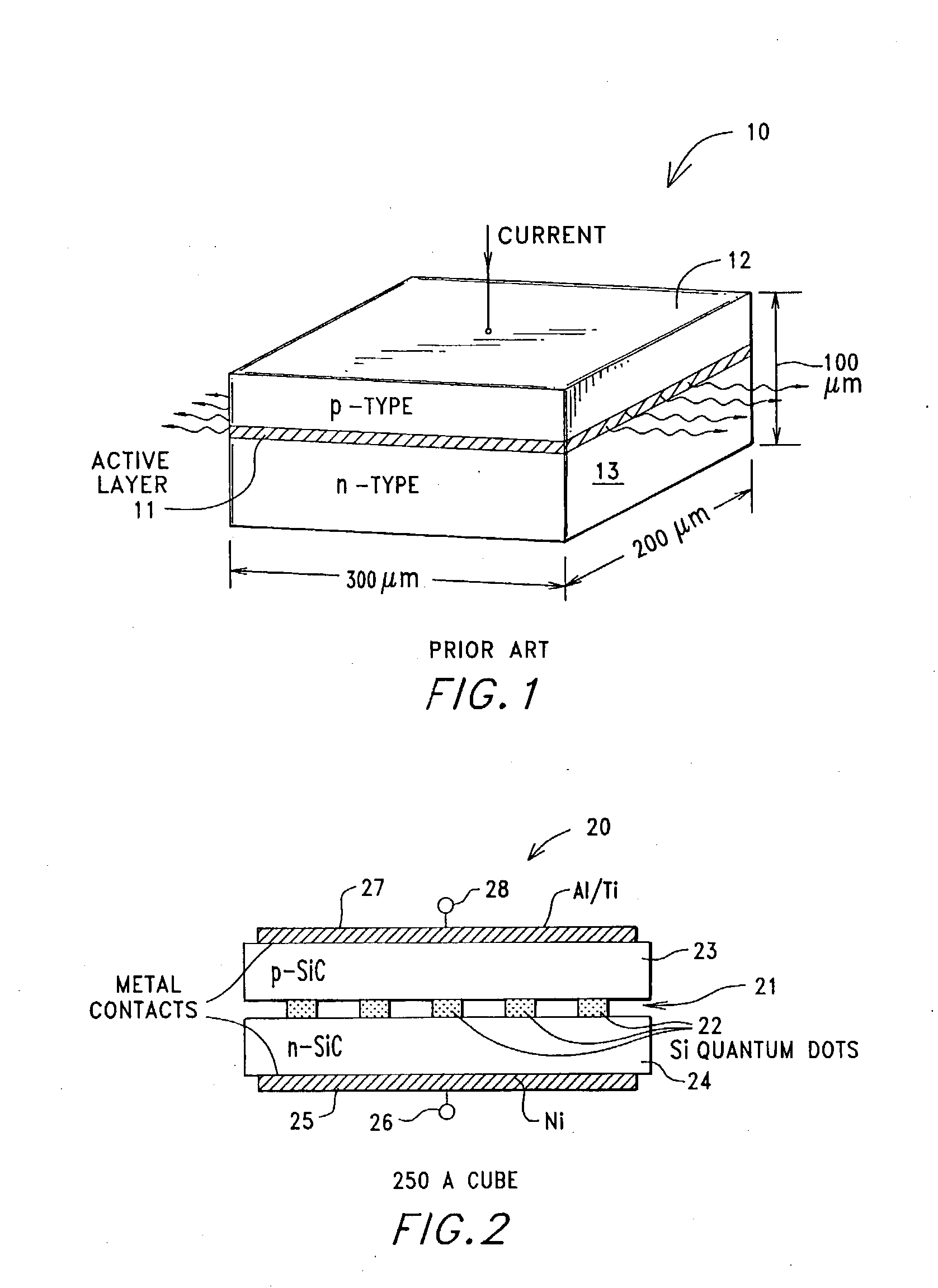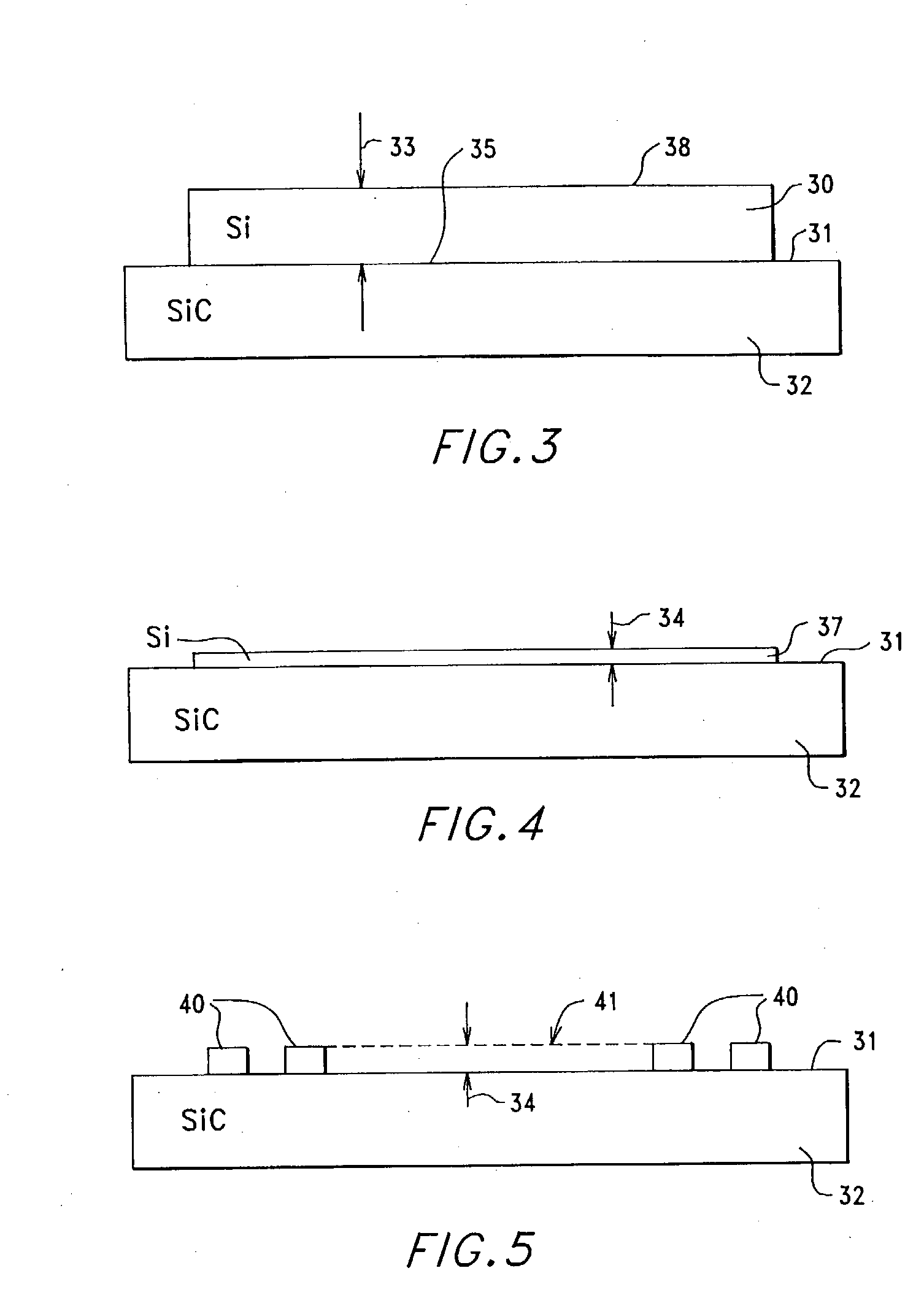Double heterojunction light emitting diodes and laser diodes having quantum dot silicon light emitters
a light emitter and laser diode technology, applied in the direction of lasers, semiconductor laser structural details, semiconductor lasers, etc., can solve the problem of relatively inefficient light emitters of silicon
- Summary
- Abstract
- Description
- Claims
- Application Information
AI Technical Summary
Benefits of technology
Problems solved by technology
Method used
Image
Examples
Embodiment Construction
[0025] With reference to FIG. 2, a Si-based DH LED or a Si-based DH LD 20 in accordance with this invention includes a thin (no greater than about 250 Angstroms thick) layer 21 having a plurality of narrow band gap Si QDs 22, wherein Si QD layer 21 is sandwiched between a p-type, wide band gap SiC cladding layer 23 and an n-type wide band gap SiC cladding layer 24.
[0026] DH device 20 also includes a first metal electrical contact 25 and its electrical connection 26, and a second metal electrical contact 27 and its electrical contact 28. Metal contacts 25 and 27 are preferably alloyed at high temperature, for example over 1000 degrees centigrade, thus assuring good ohmic contact to the DH device 20. Nickel (Ni) can be used to form contact 25, whereas aluminum (Al), titanium (Ti) or a Al / Ti alloy can be used to form contact 27.
[0027] The two doped SiC cladding layers 23 and 24 have a wide or large band gap and a small index of refraction, and the two cladding layers 23 and 24 form a...
PUM
 Login to View More
Login to View More Abstract
Description
Claims
Application Information
 Login to View More
Login to View More - R&D
- Intellectual Property
- Life Sciences
- Materials
- Tech Scout
- Unparalleled Data Quality
- Higher Quality Content
- 60% Fewer Hallucinations
Browse by: Latest US Patents, China's latest patents, Technical Efficacy Thesaurus, Application Domain, Technology Topic, Popular Technical Reports.
© 2025 PatSnap. All rights reserved.Legal|Privacy policy|Modern Slavery Act Transparency Statement|Sitemap|About US| Contact US: help@patsnap.com



